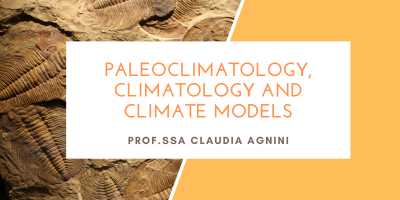Paleoclimatology, Climatology and Climate Models

Period: First semester
Course unit contents:
PALEOCLIMATOLOGY MODULE:
1. Definition and Purpose of Paleoclimatology, Importance of studying past climate; 2. Fundamental Concepts: Climatic proxies, Stratigraphy, Dating methods; 3. Climate Reconstruction Methods, Climatic proxies: Dendrochronology, Analysis of lake and marine sediments, Stable isotopes, Pollen, Ice cores, etc.; 4. Absolute and Relative Dating Techniques: Radiocarbon dating, Dendrochronology, Sediment dating; 5. Climate Archives: Characteristics and interpretation of climate archives (e.g., ice cores, trees, corals, sediments, instrumental); Limitations and accuracy of paleoclimatic data; 6. Climate History: Major climatic periods in Earth's history: from Archean to Quaternary, Significant climate changes throughout geological history (e.g., glacial periods, thermal maxima, periods of climate stability); 7. Applications of Paleoclimatology: Use of paleoclimatic data to assess and predict future changes, Possible role of paleoclimatology in formulating adaptation and mitigation policies.
CLIMATOLOGY MODULE:
1. Global physical climatology: fundamental physical principles of the Earth’s climate system; 2. The temperature record: examination of instrumental data, natural variability and long-term trends; 3. The carbon cycle and greenhouse gases: natural and anthropogenic sources and sinks of carbon dioxide, methane, and other greenhouse gases; 4. Detection and attribution of climate change: causes of observed climate trends; 5. Climate models and future projections: from simple energy balance models to complex global climate models (GCM); 6. Impacts of climate change: physical, ecological, and societal effects of climate change; 7. Uncertainty and risk: estimation methods and statistical significance; 8. Mitigation and adaptation: strategies to reduce greenhouse gas emissions (mitigation) and to adjust to climate impacts (adaptation); 9. Policy, economics and ethics: climate governance frameworks, economic instruments, and ethical issues; 10. Global warming papers.
Planned learning activities and teaching methods: The course will be delivered through a combination of lectures, guided discussions, group activities, flipped classroom sessions, project-based learning, practical exercises, and case study analysis. Active student participation will be encouraged through the use of innovative teaching methods aimed at fostering dynamic and engaging learning experiences. Curricular and support activities will make use of flexible teaching methods and tools, tailored to the specific needs of different student profiles, with the goal of promoting inclusive and personalized learning. These include access to digital and multimedia learning materials, as well as the use of online platforms for individual reinforcement or in-depth study.The course includes differentiated assessment methods based on specific learning needs. In addition to summative assessment, it features ongoing assessment throughout the semester, using interactive tools such as Wooclap to support student engagement, monitor understanding in real time, and provide continuous formative feedback. For some activities, peer assessment will also be implemented, encouraging collaborative learning and critical reflection.The course includes both formative assessments throughout the semester, aimed at helping students monitor their own learning progress, and specific tasks that contribute to the final evaluation of the module.Some activities also include peer assessment, with the aim of promoting collaborative learning and critical reflection.
In addition to contacting the course instructor, students with disabilities, specific learning disorders, special educational needs, or other health conditions may reach out to the Student Services Office – Inclusion Section to receive more information about available teaching support and tools.
